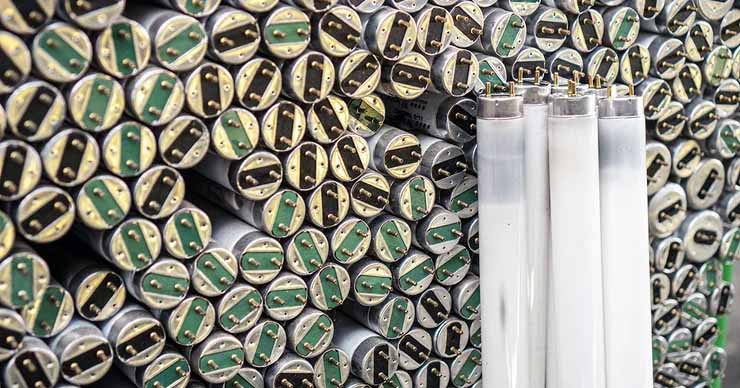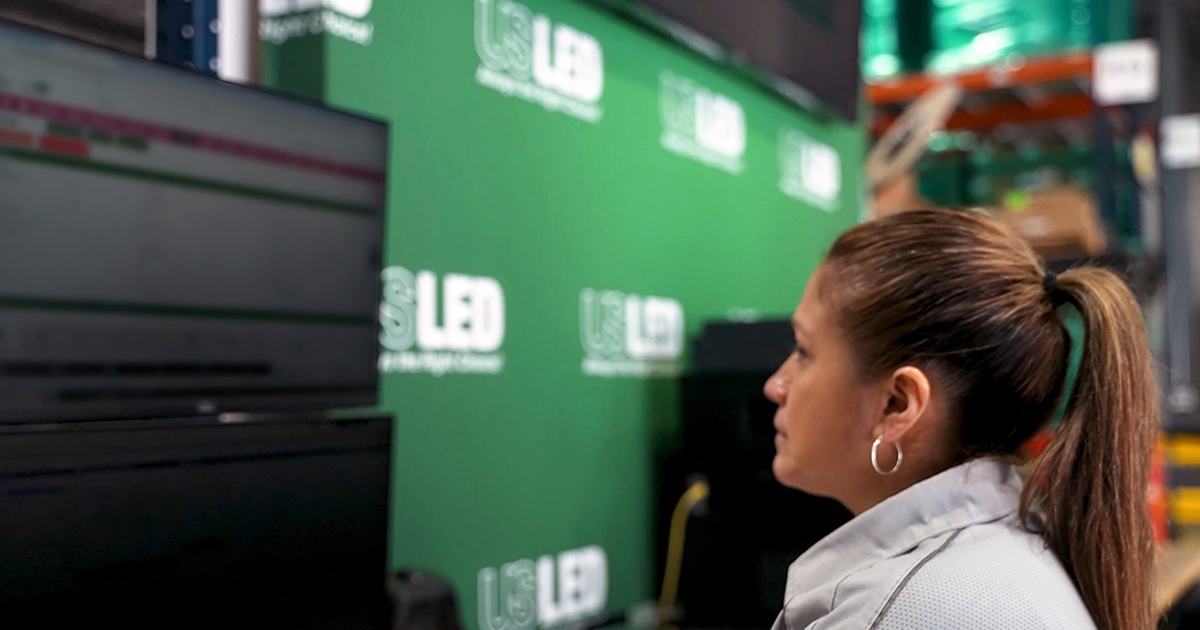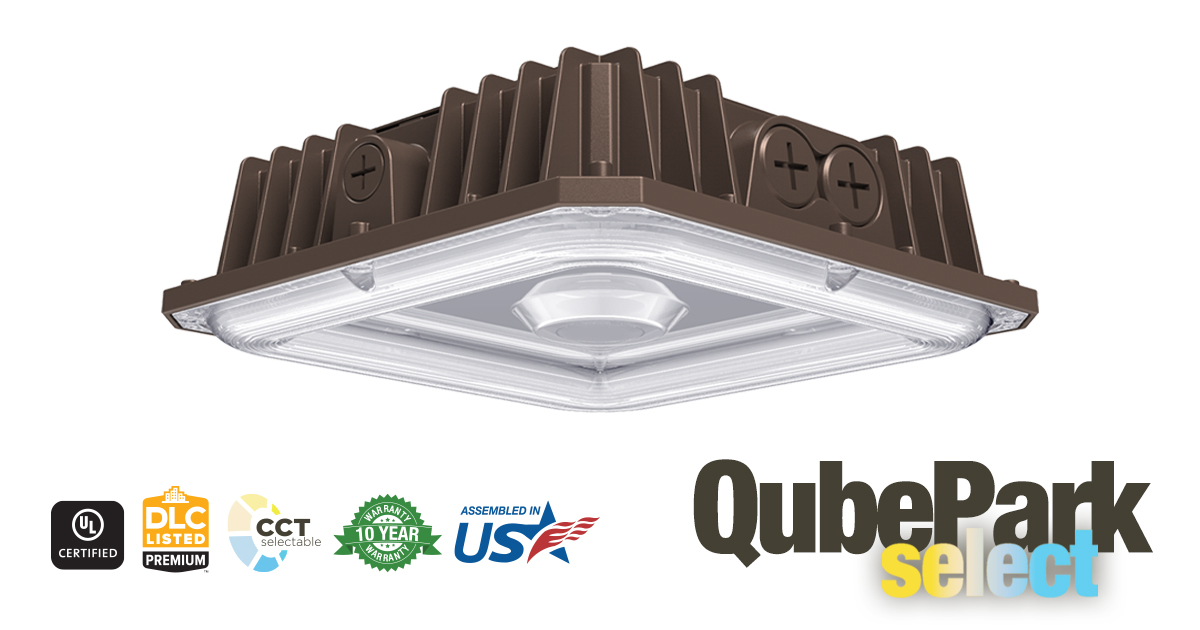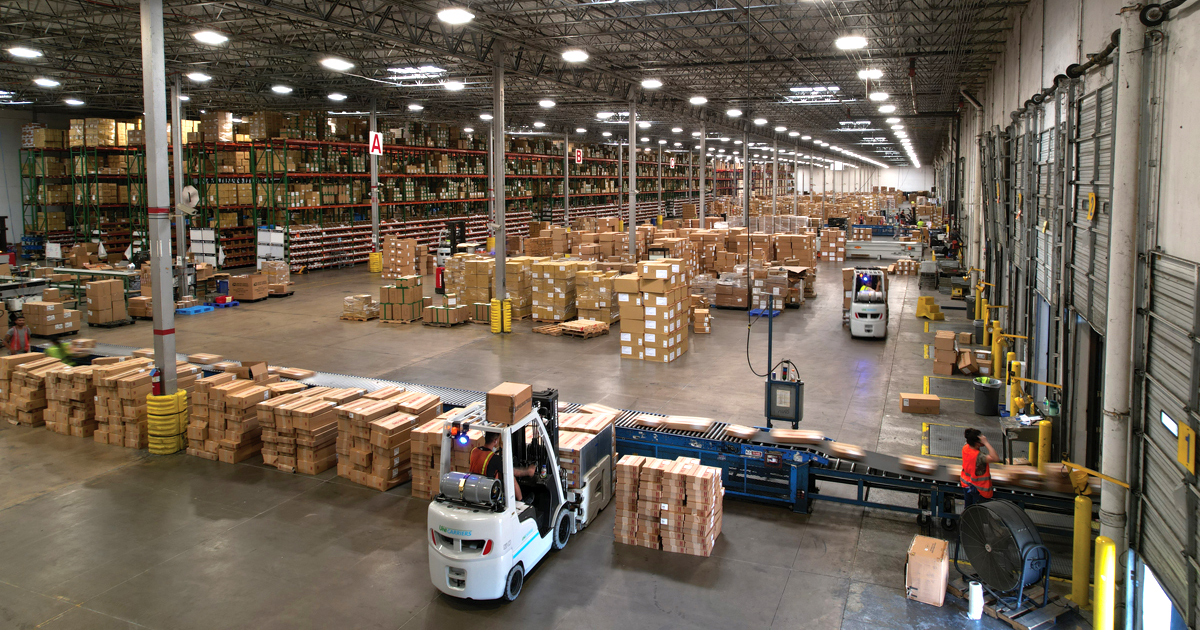
With states passing legislation to ban screw-based and pin-based fluorescent tubes, organizations should transition to LED before the deadlines to reduce costs and greenhouse gas emissions.
Several states in the US, including Hawaii, Colorado, Oregon, Rhode Island, and Maine, have passed laws that aim to ban the sale of standard pin-base fluorescent tubes in addition to screw-base compact fluorescent lights (CFLs). These legislations are expected to help organizations save approximately $2 billion in utility costs by 2050 and significantly reduce the risk of mercury exposure. Likewise, California and Vermont had already enacted similar clean lighting legislation last year, indicating that the country is moving toward more energy-efficient and eco-friendly lighting solutions.
Why Are Fluorescents Lights Being Phased Out?
Fluorescent tubes were once the most energy-efficient lighting option available to consumers, and they remain common in places like schools, offices, and warehouses. Advances in technology and lower costs have made LED light design more widely available and cost-effective as a replacement for fluorescent tubes. LED technology has positioned itself as the most energy-efficient technology, using up to 75% less electricity and with lifetimes of up to 200,000 hours. Unlike fluorescent, LED lighting does not contain toxic materials like mercury and does not risk contaminating public areas or landfills.
In the states where sales of fluorescent will be banned over the coming years, the transition to LEDs is expected to lead to a total reduction in carbon dioxide emissions of approximately 11.6 million metric tons by 2050, the equivalent of emissions from about 2.5 million gasoline-powered vehicles driven for one year. Additionally, these states are expected to save 5,675 gigawatt-hours of electricity in 2030.
The fluorescent bans are a crucial step to reduce exposure to toxic elements like mercury, a potent neurotoxin that threatens human health and the environment. A fact sheet from the US Environmental Protection Agency highlights, "Exposure to mercury, a toxic metal, can affect our brain, spinal cord, kidneys and liver, causing symptoms such as trembling hands, memory loss, and difficulty moving." Unfortunately, roughly 75% of fluorescent tubes are not disposed of properly by end-users, which can contaminate rivers, lakes, and oceans with mercury. To address this issue, these new laws have been enacted to prohibit the sale of new, general-purpose fluorescent tubes.
When Are Fluorescents Being Phased Out?
Below is an interactive map of fluorescent bulb bans by state and the deadlines for when screw-based CFLs, pin-based CFLs, and pin-based fluorescent tubes will be banned. These recent state laws were passed with broad support, including labor unions, environmental and advocacy groups, and waste management companies. It is expected that in 2025, more state legislatures will take the opportunity to pass similar regulations that assist businesses with cutting utility costs, combatting carbon emissions, and protecting the environment.
|
State
|
Screw-Based CFL Phaseout Date
|
Pin-Based CFL & Fluorescent Linear Phaseout Date
|
High-CRI Fluorescent Linear Phaseout Date
|
|
California
|
Ban Active
January 1, 2024
|
Ban Active
January 1, 2024
|
Ban Active
January 1, 2025
|
|
Colorado
|
Ban Active
January 1, 2025
|
Ban Active
January 1, 2025
|
Ban Active
January 1, 2025
|
|
Hawaii
|
Ban Active
January 1, 2025
|
Ban Begins
January 1, 2026
|
Ban Active
January 1, 2021
|
|
Illinois
|
Ban Begins
January 1, 2026
|
Ban Begins
January 1, 2027
|
No Specific Requirements
|
|
Maine
|
Ban Active
January 1, 2025
|
Ban Begins
January 1, 2026
|
|
|
|
Introduced Legislation
|
Introduced Legislation
|
Ban Active
October 1, 2024
|
|
Massachusetts
|
Introduced Legislation
|
Introduced Legislation
|
Ban Active
January 1, 2022
|
|
Minnesota
|
Ban Active
January 1, 2025
|
Ban Begins
January 1, 2026
|
No Specific Requirements
|
|
|
Introduced Legislation
|
Introduced Legislation
|
|
|
New Jersey
|
No Specific Requirements
|
No Specific Requirements
|
Ban Active
January 18, 2023
|
|
New Mexico
|
Introduced Legislation
|
Introduced Legislation
|
No State-Specific Requirements
|
|
New York
|
No Specific Requirements
|
No Specific Requirements
|
|
|
Oregon
|
Ban Active
January 1, 2025
|
Ban Active
January 1, 2025
|
Ban Active
January 1, 2023
|
|
Rhode Island
|
Ban Active
January 1, 2024
|
Ban Active
January 1, 2025
|
Ban Active
January 1, 2025
|
|
Vermont
|
Ban Active
February 17, 2023
|
Ban Active
January 1, 2024
|
Ban Active
July 1, 2020
|
|
Washington
|
Ban Begins
January 1, 2029
|
Ban Begins
January 1, 2029
|
Ban Active
January 1, 2023
|
|
Washington D.C.
|
|
|
|
How To Prepare For The Fluorescent Bans
Whether a single site or national footprint, now is the time for organizations to prepare for the fluorescent bans in these states. With the help of US LED, here are three steps to get ahead of the transition.
1. Get professional on-site lighting audits of your facilities.
A professional lighting audit identifies energy-saving opportunities within a facility. It involves gathering critical information about the lighting system and the facility to develop a project plan incorporating measures to achieve operational goals. US LED's lighting audit process efficiently collects comprehensive data to analyze the benefits of retrofitting fluorescent tubes with LEDs. This data includes insights on cost savings, providing facility managers with all the necessary information to make informed decisions.
2. Retrofit facilities based on their geographic location and potential payback.
With lighting audits complete, US LED project management can assist you in better understanding which geographic locations to prioritize lighting retrofit projects to get the most significant financial payback and stay ahead of the fluorescent phaseout deadline dates. Furthermore, US LED's Return on Investment (ROI) analysis can reveal immediate energy savings, the project payback, the cost of waiting, and the environmental impact.
3. Take advantage of additional rebates and tax deductions.
Now more than ever, utilities and government entities offer substantial rebates and incentives to organizations upgrading from legacy fluorescent technology to energy-efficient LEDs. As a part of the ROI analysis, US LED can estimate the total applicable rebates for each lighting project, complete the appropriate documentation, and help ensure you get the funds. Additionally, organizations looking to capitalize on available benefits fully can take advantage of the 179D Energy Efficient Tax Deduction. This federal tax deduction allows property owners to claim up to $5.00 per square foot for installing qualifying energy-efficient systems like interior lighting and HVAC.
Choose A National Lighting Partner
Partnering with an experienced lighting provider like US LED can help companies reduce personnel involvement and liability while reducing energy consumption and staying up to date with new legislation. US LED's extensive expertise in LED lighting, controls, and other efficiency solutions makes it a top choice for businesses wanting to improve their productivity and lower expenses. To take the first step towards a brighter future, contact US LED today to discuss an initial project assessment.
FAQs about fluorescent tube led replacement
What is the best way to replace fluorescent tubes with LED tubes?
The best way to replace fluorescent tubes is to use LED replacement tubes that match your fixture type. If you have existing ballasts, you can use ballast-compatible LED tubes (plug and play). For better long-term savings, many choose ballast bypass LED tubes (also called direct wire LED tubes) that eliminate the ballast altogether for increased energy efficiency and fewer maintenance costs.
What’s the difference between ballast bypass and ballast compatible LED tubes?
Ballast compatible LED tubes (plug and play) work with your existing magnetic or electronic ballasts, requiring no rewiring. Ballast bypass tubes, on the other hand, require the ballast to be removed and the line voltage wired directly to the lamp holders. While bypass tubes require more electrical work, they reduce long-term issues since ballasts can fail and consume power unnecessarily.
Do LED tubes work in all fluorescent fittings?
Not all LED fluorescent replacement tubes are universally compatible. Plug and play options are ideal for quick swaps, but they require a compatible ballast. Hybrid LED tubes work with both ballasts or direct wire setups. Always check the manufacturer’s instructions and consult an electrician if unsure.
Can I simply remove my old tube and install an LED one?
You can simply remove the old fluorescent tube and install an LED tube—but only if it's a ballast-compatible model and your ballast is in good condition. Otherwise, a ballast bypass installation will be needed. Direct wire LED tubes provide the most reliable performance in the long run by removing the risk of ballast failure.
Are LED tube lights brighter than fluorescent lights?
Yes. LED tube lights deliver more consistent and directional light output, often appearing brighter even with lower wattage. Plus, you can select from various color temperatures like warm white or cool white depending on your preference or facility requirements.
What are the energy savings of switching to LED tubes?
Upgrading to energy-efficient LED tubes can cut energy consumption by up to 75%. This results in substantial energy savings and a fast payback period, especially when replacing multiple fluorescent lights across a facility.
Do I need a new fixture to install LED tubes?
Not necessarily. LED tubes are designed to fit existing fluorescent fixtures. Whether you choose ballast bypass, ballast compatible, or hybrid tubes, most standard diameter tubes (like T8 or T12) are supported. Retrofitting the fixture is generally straightforward with the right wiring.
What happens if my ballast fails after installing LED tubes?
If you’re using ballast compatible tubes, a ballast failure will cause the LED tubes to stop working. To prevent downtime, consider switching to ballast bypass LED tubes during installation. These remove the ballast entirely, lowering maintenance costs and avoiding future electrical failures.
Are there rebates available for LED tube installations?
Yes! Many utility companies and local governments offer rebates and incentives for businesses that replace fluorescent tubes with LED lighting. US LED helps calculate eligible rebates, complete necessary paperwork, and maximize your return on investment.













